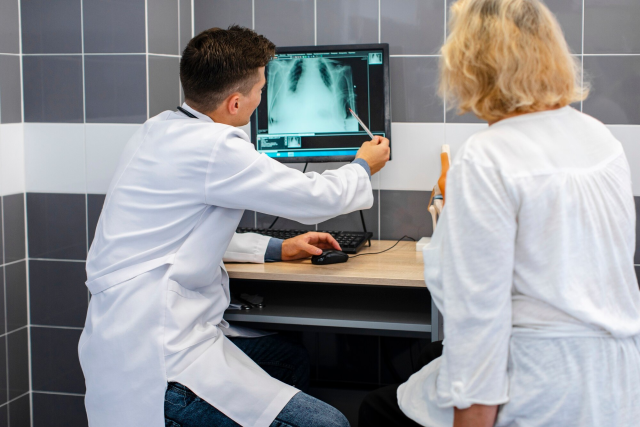
Spirometry has been used to measure lung function for a long time. Recent advances in spirometer technology, however, have made spirometry more reliable, portable, and user-friendly. They have improved the accuracy of spirometry measurements, thereby further solidifying spirometry as the gold standard for pulmonary function testing.
Will advancements in spiometer technology impact sales growth? Well, the statistics seem to suggest so. According to Coherent Market Insights, global sales of spirometers are set to rise at 9.5% CAGR during the forecast period.
The global spirometer industry size is anticipated to reach US$ 2168.2 million by 2030. Increasing prevalence of respiratory diseases and advancements in spirometers will play a key role in this future growth.
Recent Advances in Spirometer Technology
- Rise of Digital Spirometers
Development of digital spirometers perhaps represents a significant leap in the field of spirometry. These devices have revolutionized the diagnosis and management of respiratory diseases owing to their multiple benefits.
Digital spirometers offer improved features like real-time data collection and cloud-based storage. They also provide opportunities for remote consultation. These features of digital spirometers are significantly improving the accessibility and quality of lung health care.
- Portable Spirometry Devices
Another key advancement is the introduction of handheld spirometers. These compact devices are more accessible and easier to use. They enable individuals to monitor their lung function conveniently in remote settings like home.
Portable spirometers have the tendency to effectively reduce the need for frequent hospital visits. They allow patients to perform lung tests in homes and other remote locations.
- Wireless Spirometers
Integration of Bluetooth and smartphone apps in spirometers has also improved spirometry. Wireless spirometers allow patients to sync their spirometry data with mobile health applications. This enables real-time monitoring and easy sharing with healthcare providers.
Adoption of wireless spirometers is changing the way we manage respiratory diseases. This advancement supports better disease management and early detection of pulmonary conditions. Wireless connectivity facilitates seamless data transfer to electronic health records.
Portable and wireless spirometers now allow point-of-care testing in various settings. These advanced spirometry devices are shifting lung care from hospitals to patients’ homes. They empower continuous monitoring of lung function, leading to more timely interventions and personalized treatment plans.
- Telemedicine Spirometry
Telemetry spirometry is revolutionizing respiratory care by enabling remote monitoring of lung function. This innovative approach significantly improves patient outcomes and streamlines healthcare delivery.
- AI in Spirometry
Many companies are incorporating artificial intelligence and machine learning in spirometry to improve diagnostic accuracy. These novel technologies analyze spirometry data, detect patterns, and provide predictive insights into lung health. They aid healthcare professionals in early diagnosis and personalized treatment plans.
Benefits of Advanced Spirometer Technology
Advancements in spirometer technology have improved pulmonary function testing by
- Increasing accessibility
- Enhancing early detection and management of respiratory diseases
- Enabling remote monitoring and reducing hospital visits
- Improving patient compliance through user-friendly interfaces
- Providing real-time insights for personalized treatments
Future of Spirometry
The future of spirometry looks bright and exciting. This is due to continuous innovations in spirometers, including development of wearable spirometers and AI-driven diagnostic assistants.






